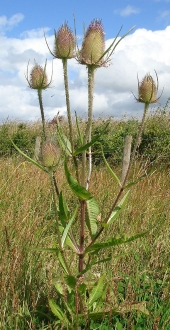
























Paul Cereghino- Ecosystem Guild
Maritime Temperate Coniferous Rainforest - Mild Wet Winter, Dry Summer









Glad you like the photos. A couple of thoughts:heninfrance wrote:
COOL pictures. Because we didn't consciously make nests for them, they've decided that the little manufactured holes in the shelving units of the wood house, and the ones under our outdoor table and benches are just perfect for them and are thanking us by laying eggs in all of them. Tad of a nuisance under the table and benches though as most folk run a mile when they see a bee. Shame on them. I can see I'll have lots of gentle explaining to do this summer! Then in the winter we'll block up those holes and make some purpose built condos for them
















The ultimate goal of farming is not the growing of crops, but the cultivation and perfection of human beings. - Masanobu Fukuoka








The ultimate goal of farming is not the growing of crops, but the cultivation and perfection of human beings. - Masanobu Fukuoka








soil wrote:do you think it would be a good idea to set them out now, let them fill up. then come spring set them in my forest garden under a small cover?
"the qualities of these bacteria, like the heat of the sun, electricity, or the qualities of metals, are part of the storehouse of knowledge of all men. They are manifestations of the laws of nature, free to all men and reserved exclusively to none." SCOTUS, Funk Bros. Seed Co. v. Kale Inoculant Co.




The ultimate goal of farming is not the growing of crops, but the cultivation and perfection of human beings. - Masanobu Fukuoka








Dianne Keast wrote:
So it seems mason bees do not make honey.









Owner, Crown Bees
Think outside the hive, raise native bees
 1
1




 1
1




Owner, Crown Bees
Think outside the hive, raise native bees








Owner, Crown Bees
Think outside the hive, raise native bees
 1
1








Owner, Crown Bees
Think outside the hive, raise native bees





 1
1








Owner, Crown Bees
Think outside the hive, raise native bees













Owner, Crown Bees
Think outside the hive, raise native bees
 2
2
















 6
6




 2
2





Long time zealous Paul supporter. Redditor, writer, podcaster, disc golfer. One day I'll be at the lab.
Want to chat in real time with other homesteaders? Join the /r/homestead Discord Server!
 2
2





"I - am a thoughtful guy. I think alotta thoughts; about alotta things." Rhett and Link

|
Create symphonies in seed and soil. For this tiny ad:
Play Your Way to a Sustainable Lifestyle: Uncover Permaculture Principles with Each Card
https://gardener-gift.com/
|





